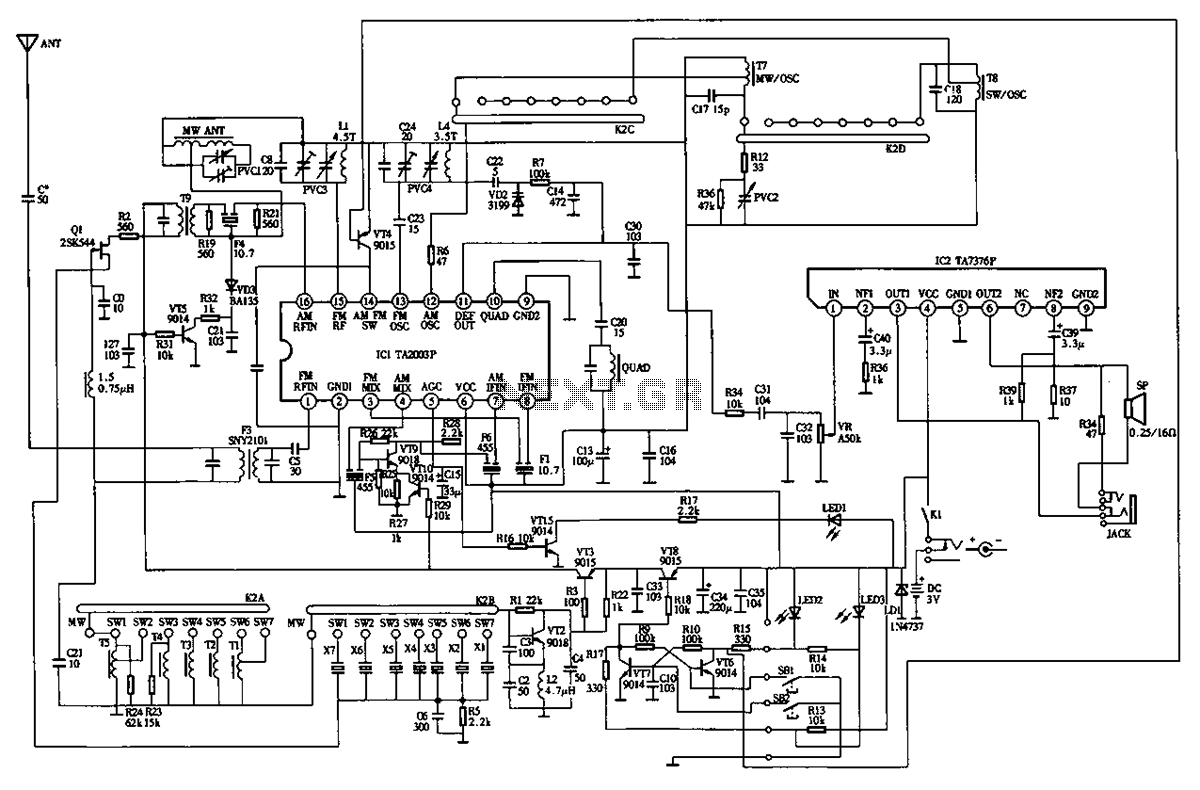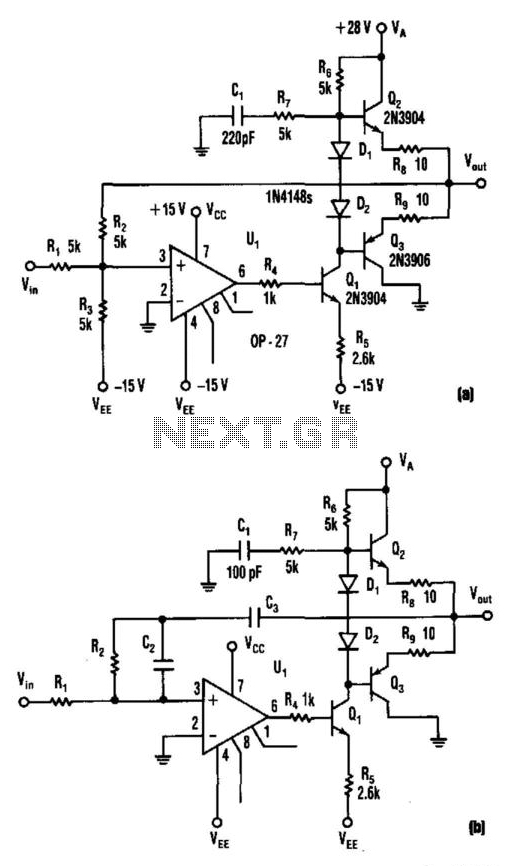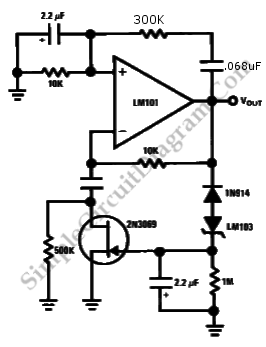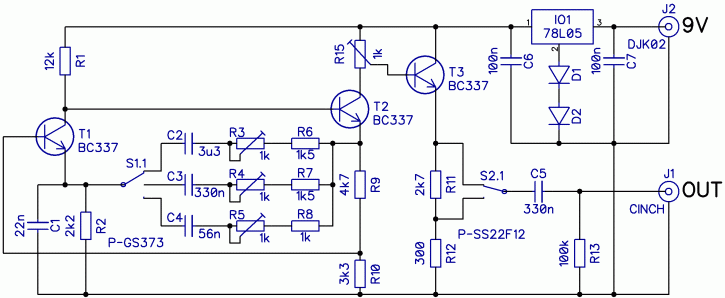
Triangle-square wave VCO
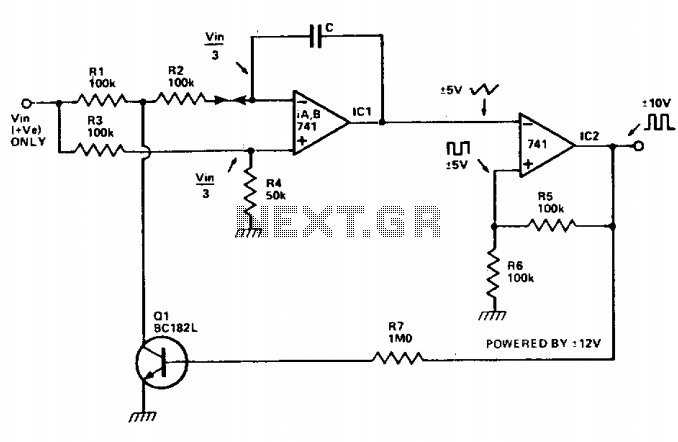
The voltage-controlled oscillator (VCO) features two buffered outputs: a triangle wave and a square wave. The frequency is influenced by the output voltage swing of the Schmitt trigger, IC2. Enhanced performance can be achieved by substituting Q1 with a switching FET. Additionally, utilizing fast FET operational amplifiers will enhance high-frequency performance.
The voltage-controlled oscillator (VCO) circuit is designed to generate two distinct waveforms: a triangle wave and a square wave, both of which are buffered to ensure signal integrity and drive capability. The frequency of the generated waveforms is primarily determined by the output voltage swing of the Schmitt trigger, designated as IC2 in the schematic. The Schmitt trigger's output provides a stable reference point that influences the oscillation frequency, allowing for precise control over the waveform characteristics.
To optimize the performance of the VCO, it is recommended to replace the transistor Q1 with a switching field-effect transistor (FET). This substitution is advantageous due to the FET's high input impedance and rapid switching capabilities, which significantly enhance the overall response time of the circuit. The use of a switching FET can reduce power consumption and improve linearity in the output waveforms, making it suitable for applications requiring high fidelity and fast signal transitions.
Furthermore, incorporating fast FET operational amplifiers into the design will further improve the high-frequency performance of the circuit. These operational amplifiers are characterized by their ability to handle rapid changes in signal levels without introducing significant distortion or delay. Their implementation will ensure that the VCO maintains its performance across a wide range of frequencies, making it ideal for applications in signal processing, modulation, and frequency generation.
Overall, the combination of a Schmitt trigger, a switching FET, and fast FET op-amps creates a robust VCO design capable of delivering high-quality waveforms with precise frequency control and enhanced performance characteristics.The VCO has two buffered outputs; a triangle wave and a square wave. Frequency is dependent on the output voltage swing of the Schmitt trigger, IC2. Superior performance can be obtained by replacing Ql with a switching FET. Fast FET op amps will improve high frequency performance.
The voltage-controlled oscillator (VCO) circuit is designed to generate two distinct waveforms: a triangle wave and a square wave, both of which are buffered to ensure signal integrity and drive capability. The frequency of the generated waveforms is primarily determined by the output voltage swing of the Schmitt trigger, designated as IC2 in the schematic. The Schmitt trigger's output provides a stable reference point that influences the oscillation frequency, allowing for precise control over the waveform characteristics.
To optimize the performance of the VCO, it is recommended to replace the transistor Q1 with a switching field-effect transistor (FET). This substitution is advantageous due to the FET's high input impedance and rapid switching capabilities, which significantly enhance the overall response time of the circuit. The use of a switching FET can reduce power consumption and improve linearity in the output waveforms, making it suitable for applications requiring high fidelity and fast signal transitions.
Furthermore, incorporating fast FET operational amplifiers into the design will further improve the high-frequency performance of the circuit. These operational amplifiers are characterized by their ability to handle rapid changes in signal levels without introducing significant distortion or delay. Their implementation will ensure that the VCO maintains its performance across a wide range of frequencies, making it ideal for applications in signal processing, modulation, and frequency generation.
Overall, the combination of a Schmitt trigger, a switching FET, and fast FET op-amps creates a robust VCO design capable of delivering high-quality waveforms with precise frequency control and enhanced performance characteristics.The VCO has two buffered outputs; a triangle wave and a square wave. Frequency is dependent on the output voltage swing of the Schmitt trigger, IC2. Superior performance can be obtained by replacing Ql with a switching FET. Fast FET op amps will improve high frequency performance.
